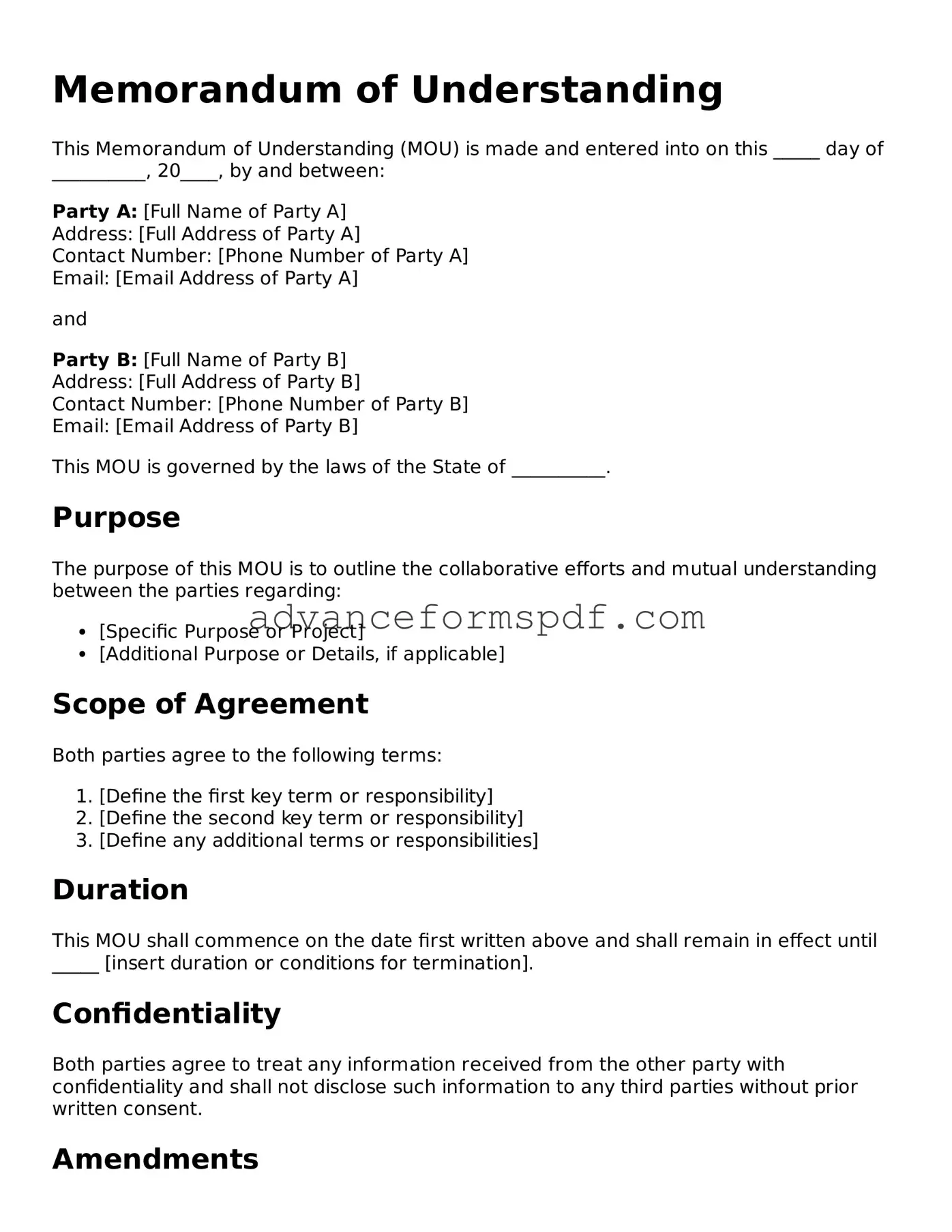Memorandum of Understanding
This Memorandum of Understanding (MOU) is made and entered into on this _____ day of __________, 20____, by and between:
Party A: [Full Name of Party A]
Address: [Full Address of Party A]
Contact Number: [Phone Number of Party A]
Email: [Email Address of Party A]
and
Party B: [Full Name of Party B]
Address: [Full Address of Party B]
Contact Number: [Phone Number of Party B]
Email: [Email Address of Party B]
This MOU is governed by the laws of the State of __________.
Purpose
The purpose of this MOU is to outline the collaborative efforts and mutual understanding between the parties regarding:
- [Specific Purpose or Project]
- [Additional Purpose or Details, if applicable]
Scope of Agreement
Both parties agree to the following terms:
- [Define the first key term or responsibility]
- [Define the second key term or responsibility]
- [Define any additional terms or responsibilities]
Duration
This MOU shall commence on the date first written above and shall remain in effect until _____ [insert duration or conditions for termination].
Confidentiality
Both parties agree to treat any information received from the other party with confidentiality and shall not disclose such information to any third parties without prior written consent.
Amendments
This MOU may be amended only by a written agreement signed by both parties.
Signatures
By signing below, both parties acknowledge that they have read and understood the terms outlined in this MOU and agree to abide by them.
Party A: ______________________________
Date: ____________
Party B: ______________________________
Date: ____________
Witness: ______________________________
Date: ____________
